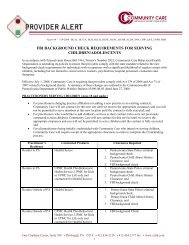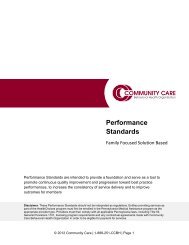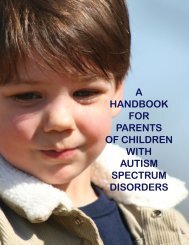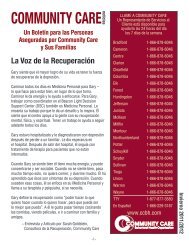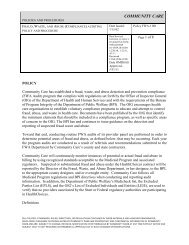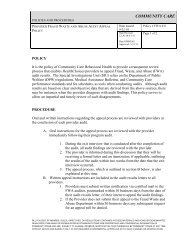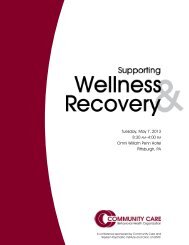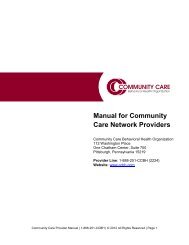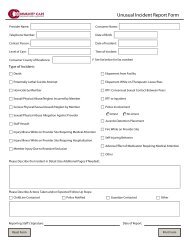a handbook for parents of children with autism spectrum disorders
a handbook for parents of children with autism spectrum disorders
a handbook for parents of children with autism spectrum disorders
You also want an ePaper? Increase the reach of your titles
YUMPU automatically turns print PDFs into web optimized ePapers that Google loves.
APPENDIX D:<br />
GLOSSARY<br />
Positive ways<br />
that you can<br />
interact <strong>with</strong><br />
your child at<br />
home include:<br />
Be consistent,<br />
have routines<br />
in home and<br />
when out.<br />
Have a place<br />
where your<br />
child feels<br />
com<strong>for</strong>table<br />
and secure.<br />
In addition<br />
to verbal<br />
praise, find<br />
other ways to<br />
rein<strong>for</strong>ce good<br />
behaviors and<br />
promote selfesteem.<br />
For<br />
example, after<br />
your child has<br />
successfully<br />
completed a<br />
task, give him<br />
or her extra<br />
time to play<br />
<strong>with</strong> a favorite<br />
toy.<br />
ISPT/Interagency Service Planning Team: A regularly scheduled meeting which<br />
occurs throughout BHRS, to obtain input from all members <strong>of</strong> the treatment team.<br />
MT/Mobile Therapy/Mobile Therapist: Therapy services available through BHRS.<br />
Neurologist: A doctor specializing in medical problems associated <strong>with</strong> the nervous<br />
system, specifically the brain and spinal cord.<br />
NOS/Not Otherwise Specified: see “PDD-NOS”<br />
OT/Occupational Therapist: Individuals who specialize in the analysis <strong>of</strong><br />
purposeful activity and tasks to minimize the impact <strong>of</strong> disability on independence<br />
in daily living. The therapist then helps the family to better cope <strong>with</strong> the disorder,<br />
by adapting the environment and teaching sub-skills <strong>of</strong> the missing developmental<br />
components. Occupational therapists <strong>of</strong>ten provide Sensory Integration Therapy.<br />
OT/Occupational Therapy: This is a therapy provided by an occupational therapist<br />
that assists in the individual’s development <strong>of</strong> fine motor skills that aid in daily living.<br />
It also can focus on sensory issues, coordination <strong>of</strong> movement, balance, and on selfhelp<br />
skills, such as dressing, eating <strong>with</strong> a <strong>for</strong>k and spoon, and grooming. It can also<br />
address issues pertaining to visual perception and hand-eye coordination.<br />
PDD: Pervasive Development Disorder<br />
PDD-NOS or PDD/NOS: Pervasive Development Disorder-Not Otherwise Specified<br />
PECS: Picture Exchange Communication System<br />
Perseveration: Repetitive movement or speech, or sticking to one idea or task, that<br />
has a compulsive quality to it.<br />
Psychoeducational Evaluation: An evaluation, consisting <strong>of</strong> a set <strong>of</strong> systematic<br />
observations obtained under standardized conditions, that is critically important to<br />
the determination <strong>of</strong> eligibility <strong>for</strong> special education services and is a key component<br />
<strong>of</strong> the comprehensive evaluation report (CER), which is ultimately crafted by the<br />
multidisciplinary team. The psychoeducational evaluation is primarily completed by<br />
the student’s school district but can also be completed through a private practitioner.<br />
- Page 34 -



